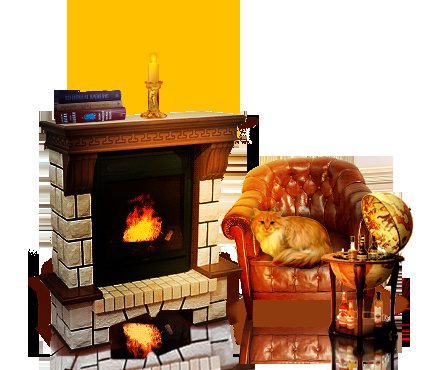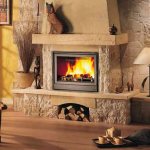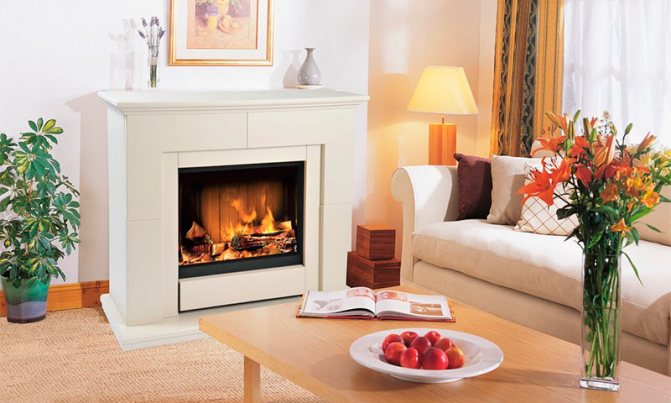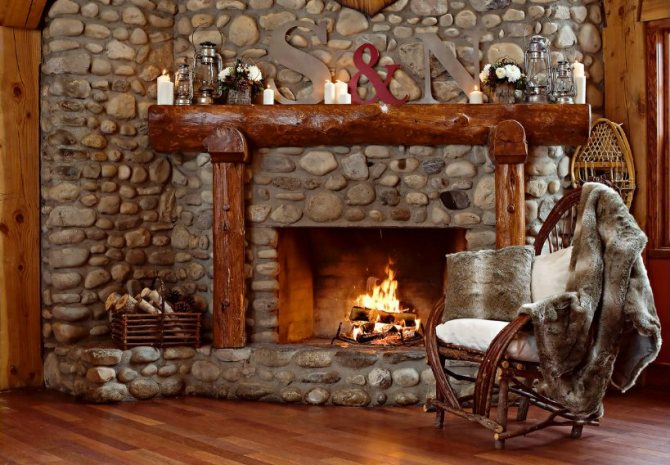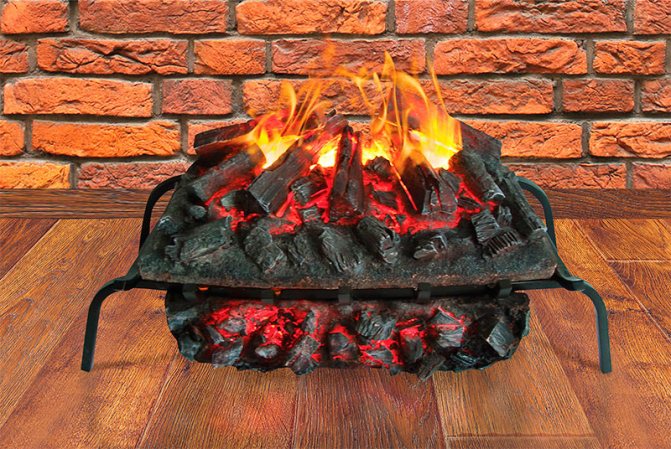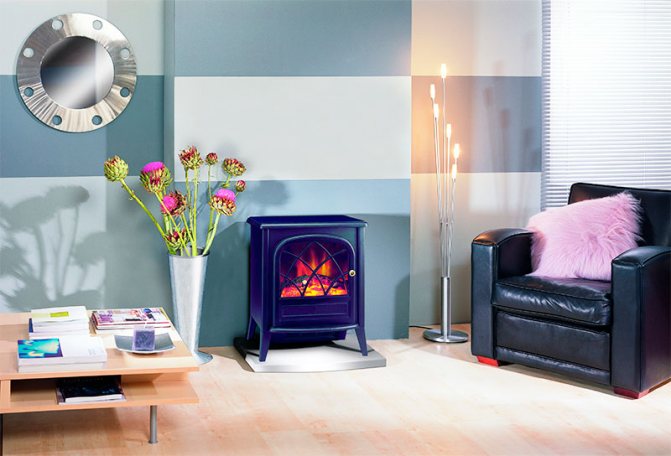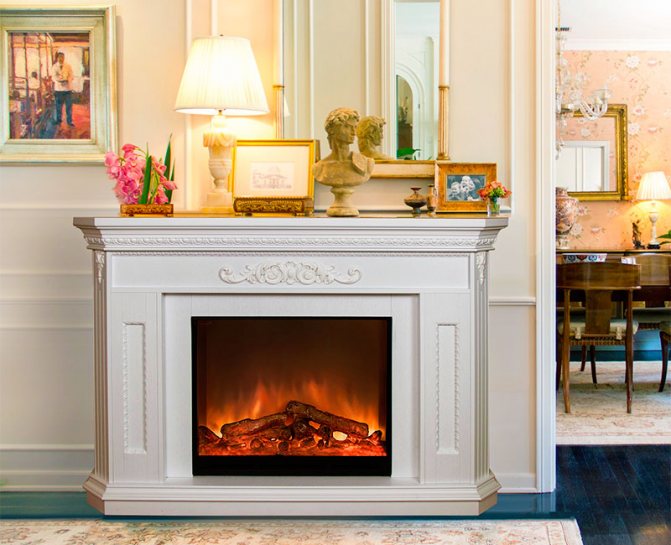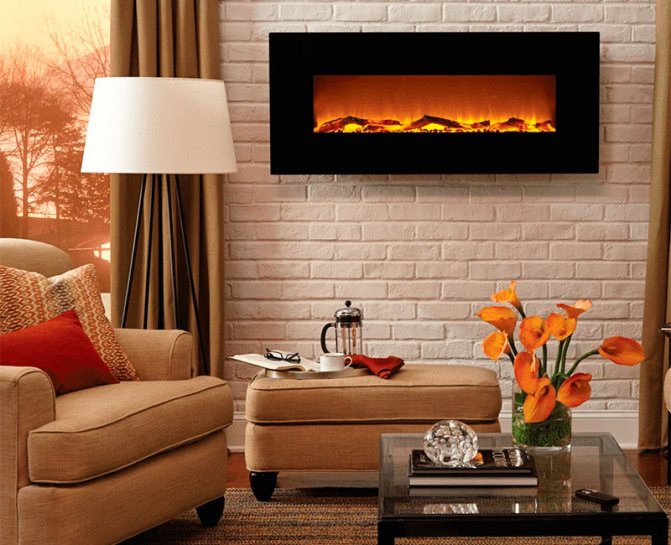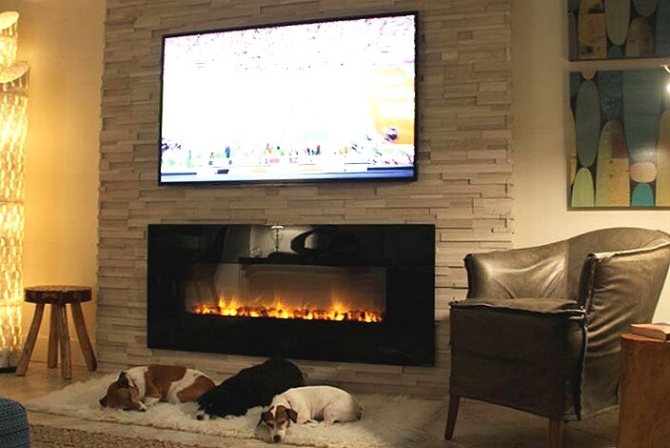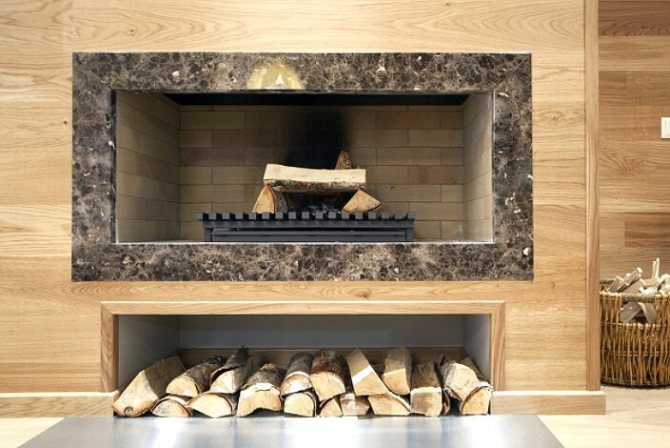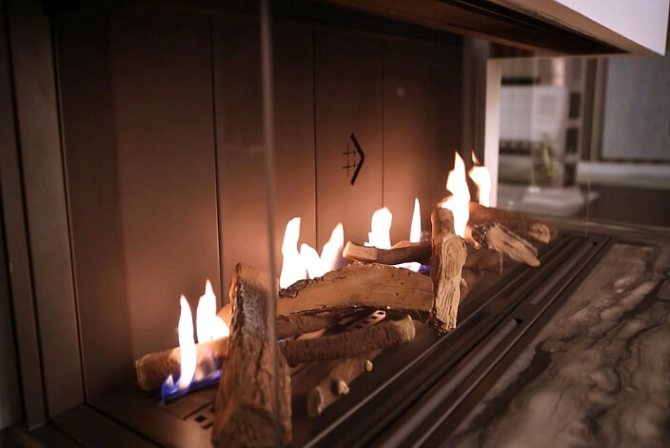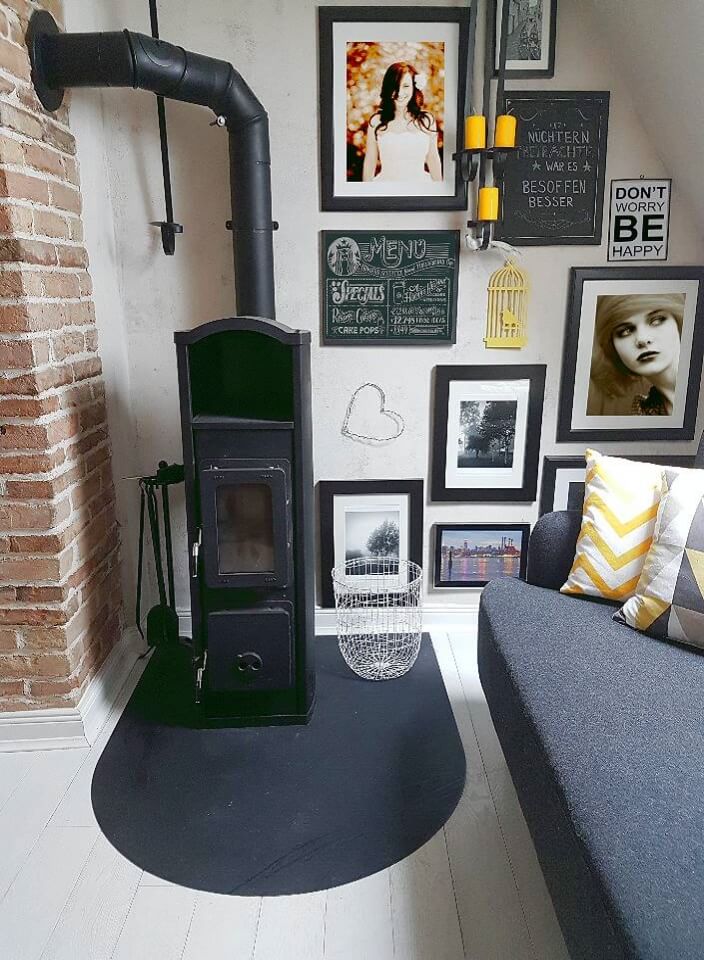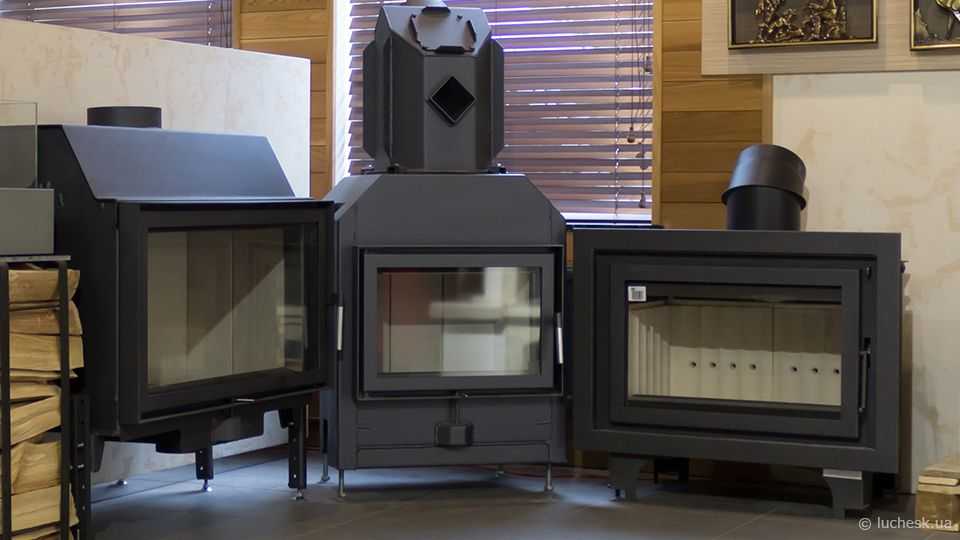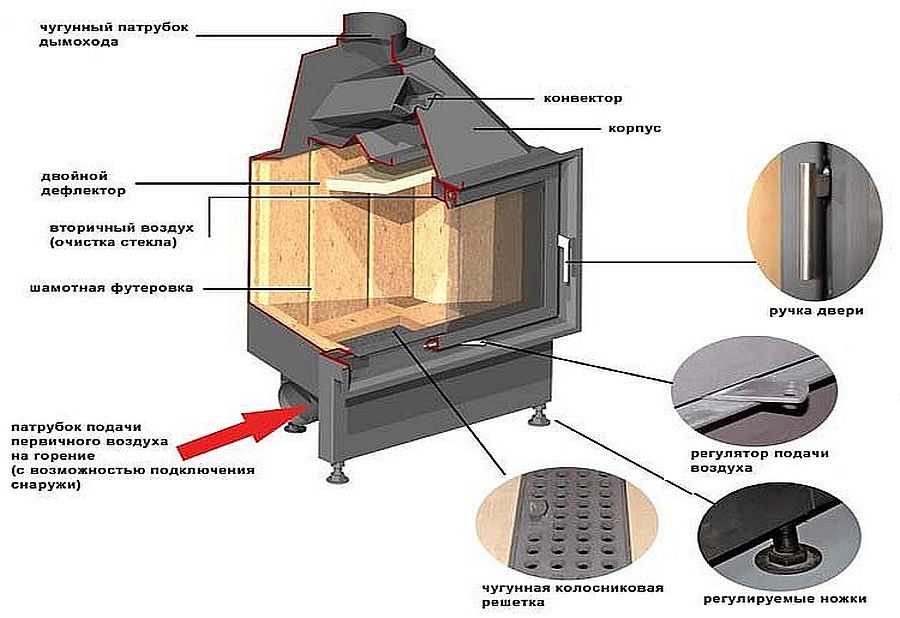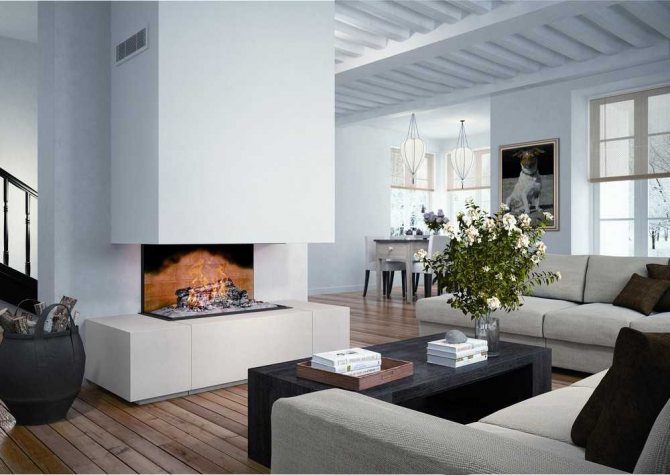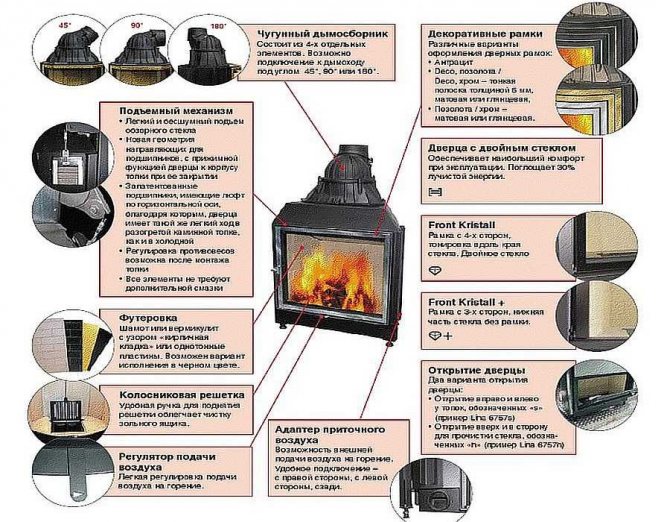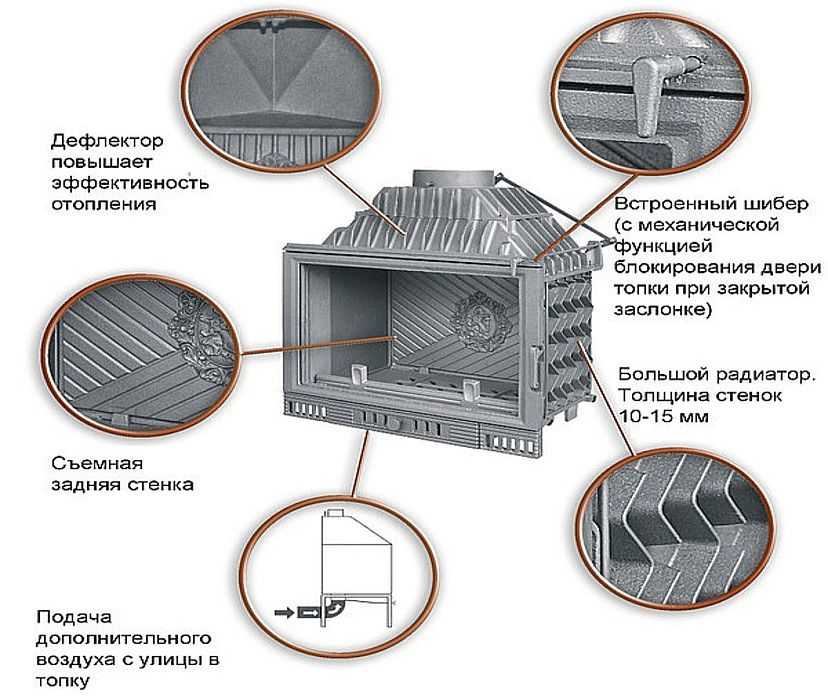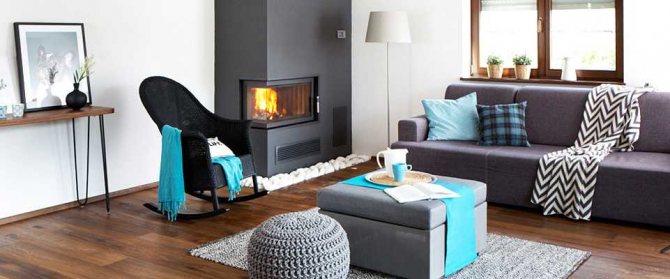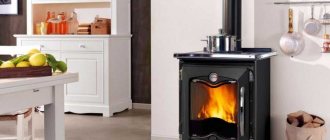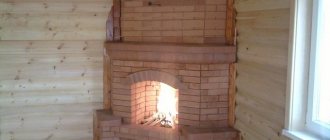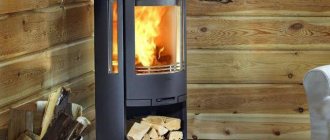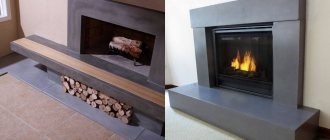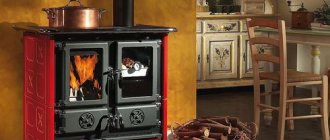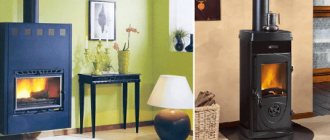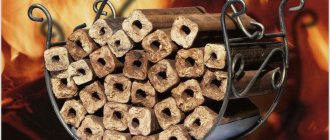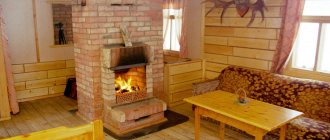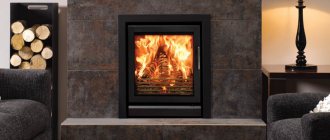What you need to know when choosing a fireplace?
Being in constant motion during the working day and not having the opportunity to fully relax even at lunchtime, people, when they come home, try to finally relax and spend the evening in the most comfortable atmosphere.
A fireplace will help create a comfortable environment at home, which is a hearth that can gather the whole family around it, and can also perform a number of functions significant for a person. Nowadays, this piece of furniture has become very popular. Therefore, we want to help you answer the question - what you need to know when choosing a fireplace.

Content:
- Types of fireplaces based on functional features
- Main types of fuel material
- Indoor classification
- Furnace modification
- Material for making fireplaces and their advantages
- Chimney for fireplace
To determine the choice, you need to establish the purpose of purchasing this device. Its main functions are:
- Heating a room or even an entire building. Initially, the stove was built exclusively for warming up the room in the cold season, and only then it became a mechanism for cooking, an element of decor, etc.
- A decorative addition to the main interior style.
Types of fireplaces based on functional features
Taking into account all kinds of additional functions that can be very useful in everyday life, there are 5 types of such devices:
- Fireplace insert, which performs functions of a purely decorative nature.
- A fireplace stove capable of heating a small room in which it is directly located.
- A stove or fireplace with a water circuit, the actions of which are more aimed at warming up the whole house.
- Heating stoves, which actually have no special properties, except for aesthetic appearance and the ability to heat a room for little money.
- A fireplace stove with a hob that allows you to quickly cook food for the whole family, as well as able to heat the room and maintain the optimal temperature.
Gas fireplace
The gas fireplace deserves special attention. Such a design will effectively fit into the interior of the apartment, will certainly create a cozy atmosphere in the room, and will also bring a lot of aesthetic pleasure. However, employees of the gas service are unlikely to like this idea, since the installation of such a fireplace structure must meet certain requirements. If electric fireplaces for an apartment do not require a specialized permit, then with gas structures the situation is somewhat different.
Interesting: What is convection: general information and use in equipment
The first thing that is required is the place in which the gas cylinder should stand. Agree, next to the fireplace it will not look very aesthetically pleasing. Accordingly, such a secluded corner needs to be thought out. Having received a special permit from gas workers, you can start implementing the project.
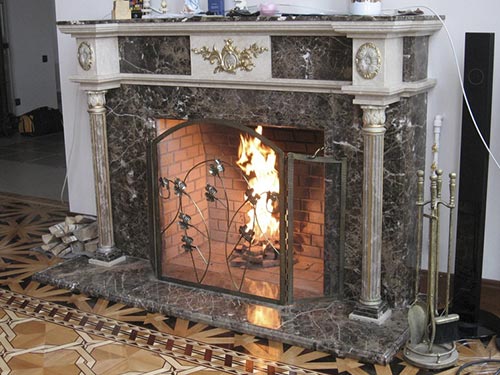

Real apartments in an apartment
Main types of fuel material
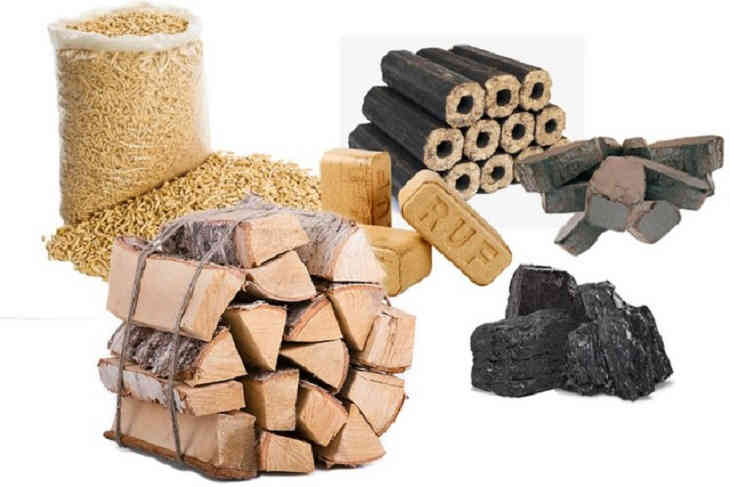

Functional features of the fireplace depend on the choice of fuel on which the fireplace will operate. Therefore, we will consider the main types of fuel materials.
- Solid fuel (wood and coal) is the most common type, as it gives a very good efficiency, and is economical to operate due to cheap raw materials.
- Gas (propane-butane or methane) is not always available, but a safe type of fuel consumed.
- Ecofuel or biofuel (ethyl alcohol, ethanol) have a distinctive feature - they are used without a chimney, therefore they can be installed in any room and are considered a kind of heat source.
- Electricity is the safest type of fuel, an electric fireplace is considered a household appliance that is aimed more at the aesthetic component of the fireplace and does not have heating functions.
How to choose the right fireplace for a summer residence
A fireplace is an indispensable source of heat, providing a comfortable temperature in the house in cold winters, and will be indispensable in damp weather. An open view of a live fire will allow you to enjoy and relax in the atmosphere of a home. The advantage of the fireplace consists in a large firebox with a direct chimney, allowing large air flows to pass through, while heating the room, and carry away dampness and unpleasant odors from the house, performing the function of a natural exhaust. There is a large selection of fireplace types.
Indoor classification
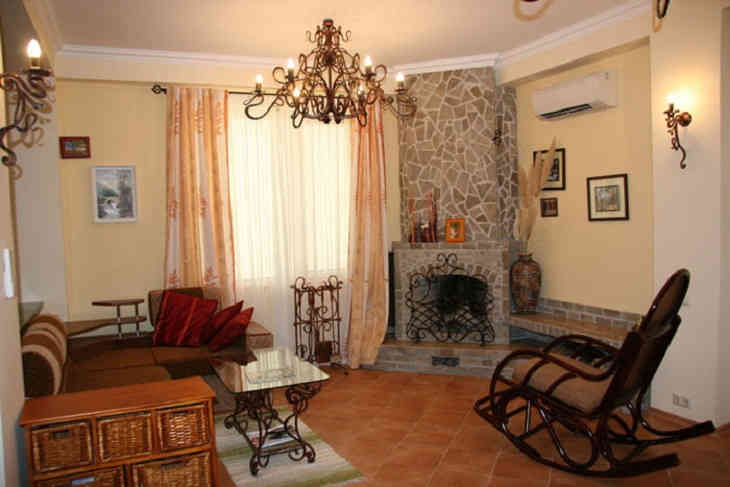

When choosing a fireplace, its location in the room is important. The configuration of the device and its quality characteristics depend on this factor. Furnaces are classified according to the following locations:
- Frontal, which is the most common installation method. Such a fireplace can become the center of attention of guests and allows a large company to sit comfortably around it.
- Corner, very harmoniously fitting into the space of small rooms, while fully performing its direct functions of heating. When installed in internal corners, they are able to give off heat to adjacent rooms.
- Built-in, i.e. located in a niche in the wall. They allow you to save space and become a highlight of the interior in the Art Nouveau or Classicism style.
- The hinged design is doubly eye-catching and allows you to equip the stove in any part of the house. Mounting is carried out to the ceiling, therefore, requires more detailed equipment. Has a laborious and costly installation method.
- Two-way or three-way, allowing space to be shared in small studio apartments. And also capable of complementing an unusual design and author's solution when planning an original interior.
- Mobile (portable), which will allow you to change its position depending on the selected permutation. Such stoves most often do not have a chimney and are used more as an aesthetically pleasing element.
Furnace modification
The firebox is a chamber in which the fuel combustion process takes place. It can have various shapes and volumes. The amount of fuel consumed depends on the size of the furnace. Moreover, they are of two types: with a closed combustion chamber and an open one.
The advantages of the first are in the following factors: safety, due to the absence of open fire and efficiency, due to high heat transfer. However, fireplaces with a closed firebox are expensive. Their efficiency is much higher than that of open ones, which, in turn, are more fire hazardous and incapable of fully heating the room. The biggest plus of open stoves is the ability to feel all the comfort from the warm air emanating from the flame.
Material for making fireplaces and their advantages
The raw materials from which the stove is made play a significant role when choosing a fireplace, since it is this part that contributes to the durability of the structure and ensures thermal conductivity.
Consider the main modern materials used for production.
Cast iron is the highest quality, durable and at the same time not expensive option used for the manufacture of fireplaces. It conducts heat well and cools down for a long time, due to which the temperature in the room remains optimal for a long time.Cast iron is a heavy material, but does not require additional floor reinforcement and can be installed in any premises. One of the main advantages is the durability of the structure and resistance to overheating and temperature fluctuations.
Brick - has good thermal conductivity, but it has a lot of weight, therefore it requires additional arrangement (foundation). The process of laying such a fireplace is quite laborious, and the price is high and not everyone can afford to create such a stove.
Steel is a good conductor, therefore it instantly heats up, but also cools down quickly, due to which it is required to constantly maintain the fire in such a fireplace. With frequent temperature changes, it corrodes.
Ceramic tiles are one of the oldest materials used for cladding a fireplace. It is an environmentally friendly raw material and has sufficient thermal conductivity. But it is not easy to fit such a stove into the modern interior of a country house or city apartment.
Criteria for choosing a suitable firebox
First of all, the firebox should consist of all integral structural elements, namely:
1. Walls. They must be thick enough, steel or cast iron,. The most suitable and high-quality one is considered to be a double-walled hearth, which is able to retain and distribute twice as much heat.
2. Foundation. The base, as already written earlier, is made of steel or cast iron. So it has less weight and less durability. Cast iron is heavier and more durable, it retains and accumulates thermal energy well and for a long time.
3. Smoke collector. It is located in the upper part of the hearth and it is there that the smoke passes, which heats the firebox, after which it fully exits through the chimney into the street.
4. Door. Creates an airtight and efficient design. Closed fireboxes have a higher output and are therefore suitable for heating houses. Fireplaces and fireplace inserts without a door are not used for heating and have an exclusively decorative function.
5. The grate. This component is intended for ash. Since it is located directly in the firebox, high temperatures regularly act on it, therefore, in most cases, manufacturers make it from cast iron.
6. Ash pan. This structural element is presented in the form of a separate compartment or, in other words, a box. It accumulates all the products of combustion and decay of fuel. After kindling, such a drawer can be pulled out or completely removed and all internal contents can be cleaned.
7. Gate. Such a damper is located either in the firebox itself or in the chimney. It serves to partially or completely block the chimney. However, the gate has openings that allow air and smoke to escape even when completely closed.
The advantages of open fireboxes include the fact that they have a more stylish and attractive appearance. However, the power and efficiency are several times higher for furnaces with a sealed door. Which can be supplemented with a refractory glass-ceramic insert.
Also, when choosing a firebox, it is very important to take into account its type and method of location in the interior of the room. For example, fireboxes are one-sided, two-sided and three-sided. Also, the so-called tunnel or through-fire chambers are very popular, the hearth of which can be simultaneously located in two rooms.
Also, the differences lie in the materials of manufacture, as mentioned earlier, the main materials are steel and cast iron. Cast iron is more expensive, since such furnaces are distinguished by increased wear resistance and warm up well. Steel is lightweight and heats up quickly, but also cools down quickly. It is equally important what materials the portal is made of. Many built-in type fireplaces are complemented by the portal in which they are located. The portal serves not only as a decorative component, but is also intended to increase the efficiency of the fireplace.Such portals are based only on environmentally friendly and non-combustible materials. The main ones are: artificial and natural stone, porcelain stoneware, tiles, tiles.
Also, when choosing a fireplace insert, a combination of other equally important characteristics and features is important, therefore, pay attention to the following points:
1. Power. Decide what role your heating unit will play in the house. It can be the main or auxiliary heating source. Based on the need, decide on the power of the furnace. On average, the optimal power indicator is considered to be 10-20 kW.
2. Efficiency. Pay attention to the efficiency, for modern furnaces it is about 80-92 percent. This interval is considered the best and most optimal.
3. Tightness of the door. In order for all the heat to be spent rationally and evenly distributed among the rooms in the house, you need to pay attention to the fit of the door. It should fit snugly and fully to the base of the hearth.
4. Style. Pay attention to the design of the heating unit. Choose the one that best matches and harmonizes with the interior of the room in which you plan to install it.
5. Manufacturer. Choose a domestic or foreign manufacturer. It is important that he is well-known and popular. The cost of domestically produced fireboxes is 2-4 times lower than that of foreign brands.
6. Cost. Determine the optimal budget for yourself, based on it, select all the models that have a suitable method and, after conducting a comparative analysis, determine the most optimal and suitable option for yourself.
7. Availability of glass cleaning system. This function is very important, as it is responsible for the cleanliness and self-cleaning of the fireplace glass. Thanks to special technologies, the glass always remains clean and transparent and you do not need to constantly clean it yourself.
8. Secondary afterburning. This feature makes the oven very efficient and economical. Due to the fact that the air is supplied to the furnace twice, almost complete combustion of the fuel occurs, after which a minimum of combustion products remain in the hearth, and the hearth works twice as long from one bookmark.
9. The presence of a handle at the door. It is the presence of the door that indicates that such a firebox will work and efficiently distribute heat throughout your home. Therefore, if you are looking for a hearth that will be intended for heating, then you need to look for a closed model with a sealed door.
10. Optimal weight. When choosing, pay attention to the weight of the product, it is important that the weight is not critical. If the mass of the hearth together with the cladding is more than 500 kilograms, you will need to reinforce the floors of the house, and in some cases even build a separate foundation for the fireplace.
Chimney
The chimney must be provided at the stage of building planning, otherwise difficulties with its installation may arise. If you already have a house, you need the help of a specialist who will carefully check the chimney. Most often, the chimney is laid out of fired clay bricks and chamotte with a shell of lightweight concrete. Another option is a steel pipe with thermal insulation (sandwich chimney). The chimney should not freeze in winter, therefore it is recommended to install it on the inner wall of the house.
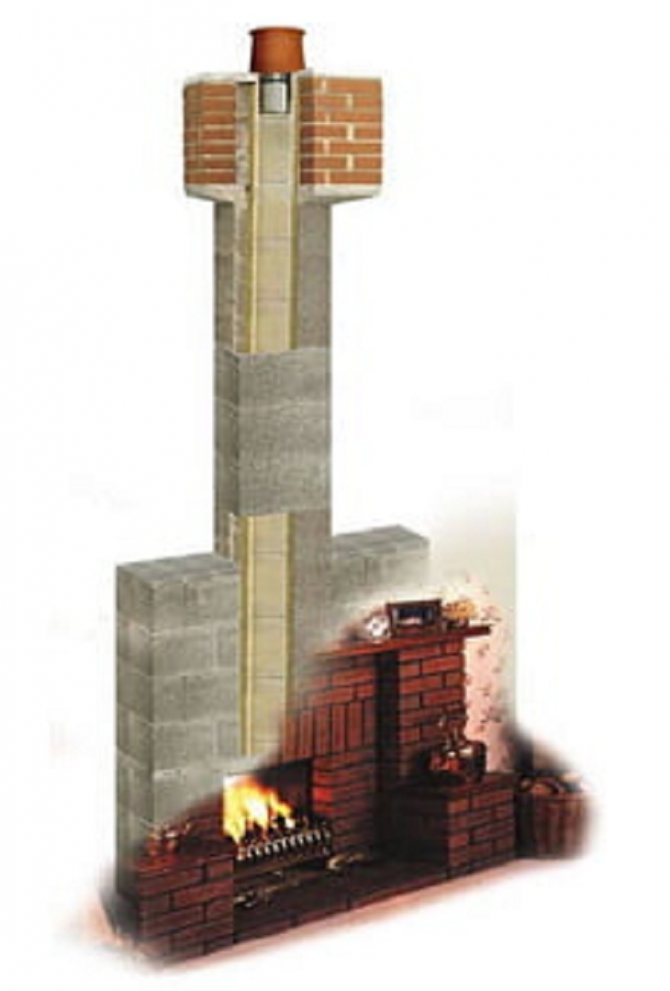

Advice: before installation, be sure to check that the diameters of the chimney and the fireplace insert pipe match.
To choose a quality fireplace that meets all your requirements, you need to carefully study the products on the market. When purchasing this device, you need to clearly understand for what purpose you are buying a fireplace. If this is an aesthetic element of your interior, then more mobile fireplaces are suitable for you.And if you want to heat the house and cook food on the stove, then cast-iron fireplaces with ceramic cladding, which have excellent heat-conducting qualities, will be able to fulfill your requirements better than others.
In order to calculate the required power of the furnace and have a high efficiency, it is advisable not to make a decision on your own, but to seek help from professionals. Experts will help you choose a fireplace stove and chimney at reasonable prices. You can familiarize yourself with our assortment on the website: https://teplo-izba.by/
Call us and we will definitely find the best solution for you!
What fireplace to choose for home and summer cottages
1. Built-in fireplace erected simultaneously with the construction of the house, in fact, it is a continuation of the base of the wall and an integral part of the integral structure, therefore the built-in fireplace takes up much less space. 2. Completed wood burning fireplace... Its advantage is that it can be built after the construction of the house. 3. Open fireplace installed in a round or square platform, which rises above the floor by 30-50 centimeters. The advantage of such a fireplace is that it can be installed in the center of a room or outside, for example, on a veranda. If you build a platform up to 70 cm high and build a skewer stand, you will get a grill fireplace from a regular fireplace.
It is best to use hardwood for heating the fireplace, and wood from fruit trees will give a particularly pleasant aroma.
As you can see, there are different types of fireplaces, but in order to choose the right fireplace for your home, choose the model and the required power of the fireplace insert, it is better to contact a specialist. They will not only help you to choose an individual heating device for the particulars of your home, but they will also be able to find a suitable option from a variety of types of cladding, to match the style of your home.
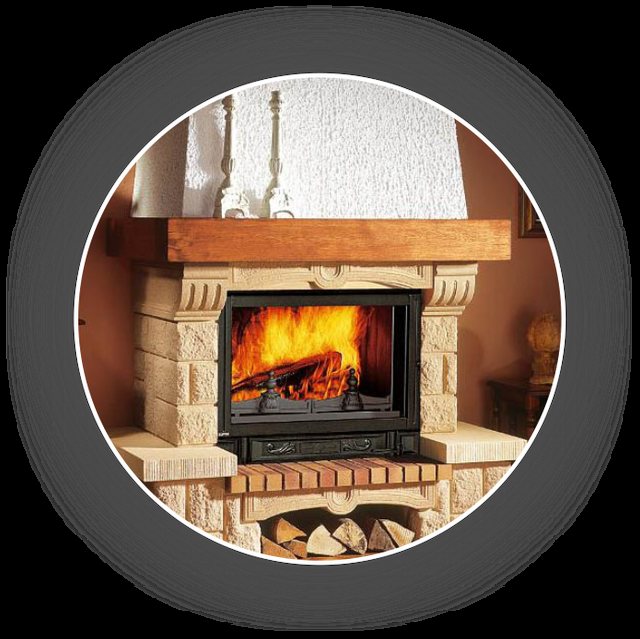

It is very important to correctly install the fireplace, since not only the quality of heating the house, but also the safety of the people living there depends on it. According to sad practice, many consumers make a big mistake, preferring to buy fireplace components on their own, resorting to the help of a specialist as the last resort. Therefore, a situation may turn out that having bought a fireplace insert, chimney and fireplace cladding, the things you purchased will have to be replaced or new ones purchased. The reason for this is the consumer's decision to be guided by the price, and only then by the quality of the material, at the risk of buying devices of unscrupulous quality from unknown manufacturers. There is also a high probability of buying components that do not fit together, because the supermarket seller, when selling the goods, does not understand what the final design should be.
By resorting to the advice of a specialist, you will first of all reduce costs, your efforts and time, allowing you to agree on all the nuances with specialist installers. The construction of a fireplace, like any other heating device, is an event that requires a serious and responsible approach of specialists. As a result of the independent choice of a fireplace for their home, people are faced with the problem of kindling a fire, smoke from the fireplace, putting their loved ones at risk of fire and other troubles.
